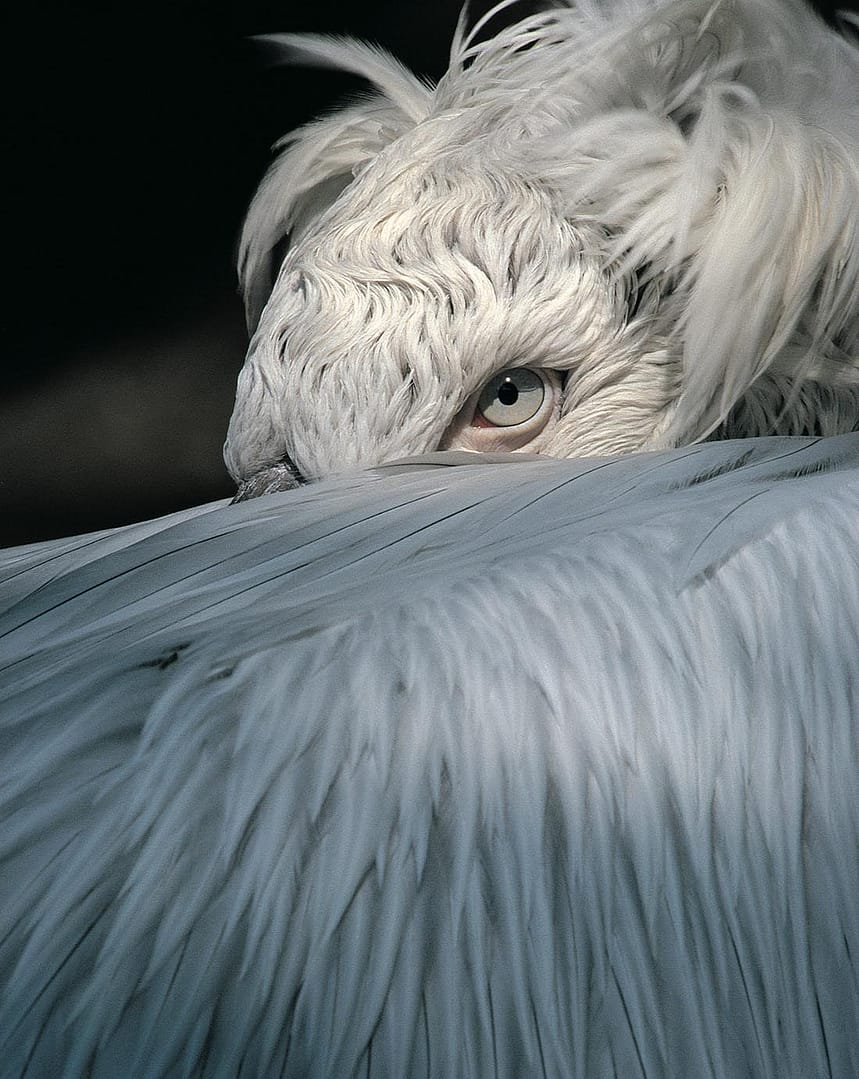THE EVER-WATCHFUL PELICAN
Helmut Moik
With an almost human eye and pose, a head decked in finery, and a wing cloak of feathers masking its face, this remains an enigmatic portrait, even when given a name. Without a glimpse of the beak – among the world’s biggest – it is hard to visualize this as a Dalmatian pelican, even though the waved silver-white feathers on its neck and flamboyantly loose plumes on its forehead could belong to no other species. Photographed at dawn, on an island in Romania’s Danube Delta, the bird is still in its sleeping position, with its head rotated a 180 degrees and its beak resting on its back, buried in feathers. Notoriously shy, Dalmatian pelicans are easily disturbed, and so it was necessary for the photographer to enter his hide before sunrise and wait for dawn. The island and the marsh vegetation offer safety from predators, both for nesting – this population of pelicans migrates from the Mediterranean region to eastern Europe specifically to breed – and for sleeping. But like many birds, a pelican sleeps with one eye open and only half its brain resting, and then only in snatches, adjusting how much of its brain is asleep by how open its eye is. Its bill, with its huge pouch of skin, is a marvellous tool, not only for scooping up fish and holding a catch, but also for evaporation-cooling when it exposes and flutters the skin. But on cold nights, with such a large area for heat loss, a huge beak can be a handicap – the reason for burying it in the feathers of its backrest, as the pelican inhales air warmed by its own body heat. With that in mind, this image of a Dalmatian pelican could be said to be a most thought provoking portrait of Europe’s biggest fishing bird.
